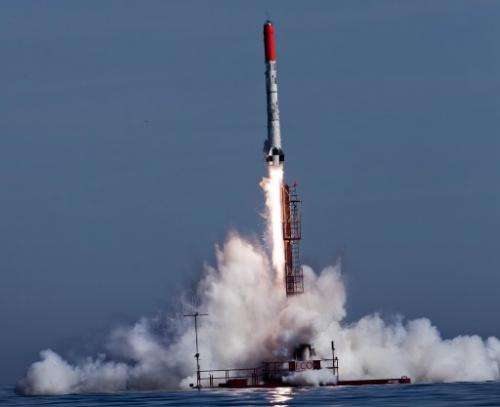Homemade Danish rocket takes off

A home-made rocket built by two Danes successfully blasted off from a floating launch pad off the Danish Baltic island of Bornholm Friday, nine months after its first test flight failed due to a defective hair drier.
"It was like seeing a missile and it came over us a couple of kilometres up. We are ecstatic and will be going home with everything we have learned," one of the Danish inventors behind the project, Peter Madsen, told public broadcaster TV2 News.
The nine-metre (30-foot), 1.6-tonne rocket and its small capsule have taken space enthusiast Madsen, former NASA employee Kristian von Bengtsson and an army of volunteers some three years to test and build.
Last September, their first launch attempt failed when a hair drier designed to keep a valve from freezing failed.
There had been fears that Friday’s attempt would also go wrong when the unmanned rocket’s automatic start sequence did not initiate, but after a new countdown began, all systems were go and at precisely 4:32 pm (1432 GMT), the rocket roared into the sky.
"It is a success the we got the rocket off the ground, and I believe that we have written a bit of history," von Bengtsson told TV2 after the successful launch.
It is not yet clear how far the rocket rose into the air and whether it reached the altitude of between 14 and 16 kilometres (8.9-9.9 miles) hoped for by the Copenhagen Suborbitals group.
Prior to last year’s failed blast-off attempt, Madsen said the group hoped to show that "with little financial means anyone can send a rocket into space, which is a privilege not just reserved for rich countries."
Last year the group, which is financed by around 20 companies and 2,000 individuals, said they had spent a total of 50,000 euros ($73,000) on the prototype.
It was not immediately clear how much more had been pumped in to get the rocket in shape for launching.
Madsen said after the failed September 2010 attempt that after three to four problem-free flights he aims to be a passenger in the rocket's tiny capsule, which would make him the first Dane in space.
(c) 2011 AFP



















